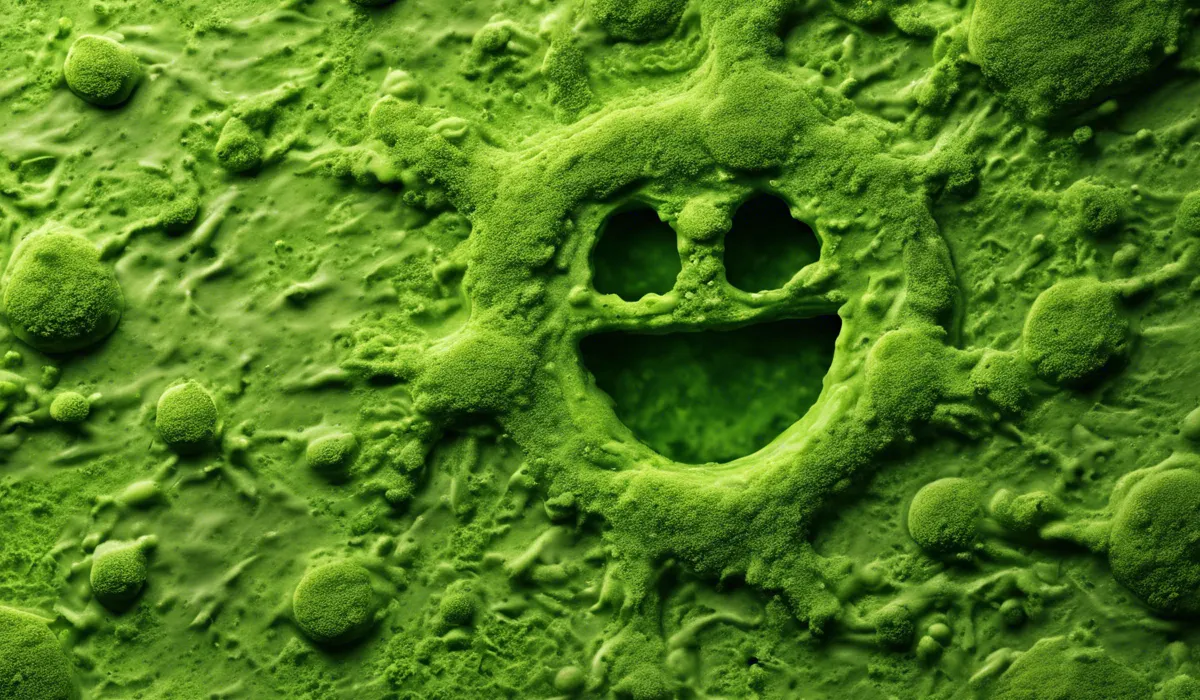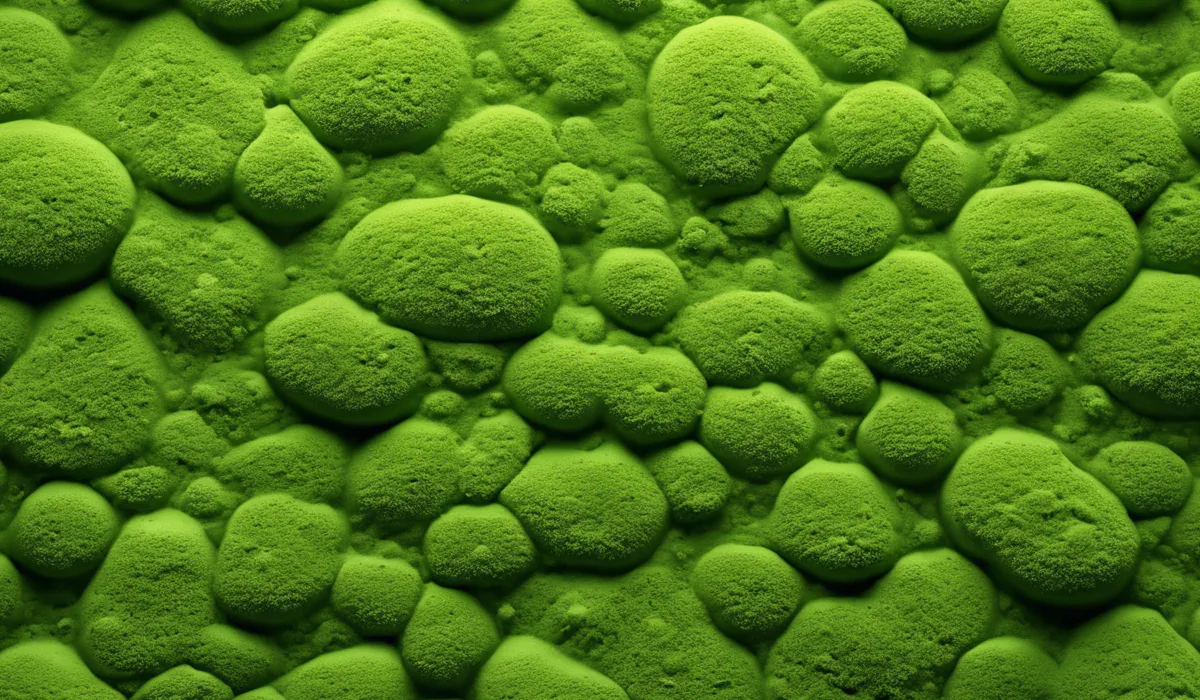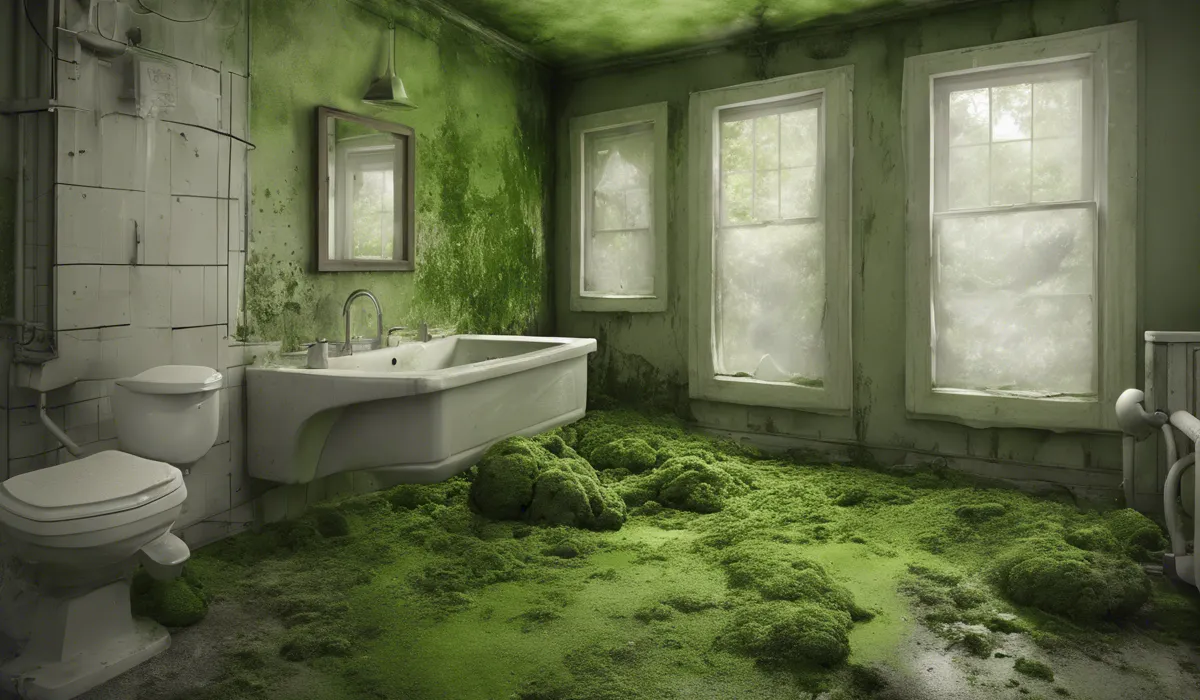Green mold can be dangerous as it sometimes produces harmful toxins. Exposure to green mold can lead to respiratory issues, allergic reactions, and in severe cases, neurological problems. It’s crucial to address green mold promptly and safely.
Understanding Green Mold

Definition of Mold and Its Various Types
Mold is a type of fungus that grows in filaments and reproduces by forming spores that can travel through the air.
It thrives in moist environments and can be found both indoors and outdoors. There are thousands of mold species, each with unique traits and effects on our environment and health.
Some common types include Aspergillus, Cladosporium, Penicillium, and Stachybotrys, commonly known as black mold.
Characteristics of Green Mold
Green mold is a term often used to describe a variety of mold species that appear green, such as Aspergillus, Cladosporium, and Penicillium.
These molds can have a powdery or fuzzy texture and may vary in shade from bright green to olive.
Green mold grows quickly in damp, warm conditions, and like all molds, it can spread by releasing spores into the air.
Common Places Where Green Mold Is Found
Green mold is commonly found in areas with high humidity or water damage, such as basements, bathrooms, and kitchens.
It can grow on a variety of surfaces, including walls, ceilings, carpets, and food items. Outdoors, it can be found on decaying plants, soil, and other organic matter.
Differences Between Green Mold and Other Mold Colors
While green mold is often associated with growth on food and in homes, molds can come in different colors, such as black, white, orange, or purple.
The color of mold can depend on the species, the substrate it grows on, and the age of the mold colony.
Unlike black mold, which is notorious for its toxicity, green mold is not always harmful but can still pose health risks.
Health Risks of Green Mold

Potential Health Effects of Exposure to Mold
Exposure to mold can cause a variety of health issues, especially for those with allergies or compromised immune systems.
Common symptoms include coughing, sneezing, watery eyes, and skin irritation. In some cases, mold exposure can lead to more severe health problems, such as asthma attacks, respiratory infections, and allergic reactions.
Specific Risks Associated with Green Mold
Green mold, while not always as toxic as some other molds, can still be dangerous.
Certain species of green mold produce mycotoxins, which are harmful substances that can lead to respiratory issues, allergic reactions, and in severe cases, neurological problems.
It is crucial to treat green mold with caution and address any infestations promptly.
Vulnerable Populations and Heightened Health Risks
Individuals with existing health conditions, such as asthma, allergies, or immune disorders are more susceptible to the effects of mold.
Children, the elderly, and pregnant women are also at greater risk. For these populations, exposure to green mold can lead to more pronounced and potentially serious health issues.
Mold-Related Illnesses and Symptoms
Exposure to green mold can result in various illnesses and symptoms. These can range from mild allergic reactions to serious conditions like mold-induced asthma, hypersensitivity pneumonitis, and in rare cases, toxic mold syndrome.
Symptoms to watch for include persistent coughing, difficulty breathing, headaches, fatigue, and dizziness.
Prevention and Remediation of Green Mold

Tips for Preventing Mold Growth in Homes and Buildings
To prevent mold growth, it is essential to control moisture levels in your home. Use dehumidifiers in damp areas, ensure proper ventilation in bathrooms and kitchens, fix leaks promptly, and clean and dry any water damage thoroughly.
Regular home maintenance and cleaning can also help prevent mold from taking hold.
How to Identify a Green Mold Problem?
Identifying a green mold problem involves looking for visible signs of mold growth, such as green patches on surfaces or a musty odor.
Other indicators include recent water damage or ongoing moisture issues. If you suspect a mold problem, it is important to inspect your home thoroughly or consider a professional mold inspection.
Professional Versus DIY Mold Removal
For small areas of mold, you may be able to handle the cleanup yourself using proper safety gear and cleaning agents.
However, for larger infestations or if you have health concerns, it is best to hire a professional mold remediation service. They have the expertise and equipment to safely and effectively remove mold.
Steps for Safely Removing Green Mold
When removing green mold, wear protective clothing, gloves, and a mask. Isolate the affected area to prevent spores from spreading.
Use a mixture of water and detergent to clean non-porous surfaces, but porous materials with mold growth often need to be discarded. After cleaning, dry the area thoroughly to prevent the mold from returning.
Importance of Addressing Underlying Causes of Mold Growth
Simply cleaning mold is not enough; you must also address the moisture problem that allowed the mold to grow.
This may involve repairing leaks, improving insulation, or increasing ventilation. By tackling the root cause, you can prevent future mold growth and maintain a healthier living environment.
FAQs About Green Mold Dangers
Is green mold in homes a health hazard?
Yes, green mold can be a health hazard as it may produce harmful toxins that can cause respiratory issues, allergic reactions, and sometimes neurological problems.
Can green mold lead to respiratory problems?
Exposure to green mold can indeed lead to respiratory issues, especially in individuals with asthma or other respiratory conditions.
Are allergic reactions common when exposed to green mold?
Yes, allergic reactions are common upon exposure to green mold, including symptoms such as sneezing, runny nose, and itchy eyes.
What should you do if you find green mold in your living space?
If you find green mold in your living space, it’s crucial to address it promptly by cleaning it up safely or hiring a professional to remove it.
Can green mold cause severe health issues?
In severe cases, green mold can lead to neurological problems and other serious health issues, making it important to mitigate exposure.
Final Thoughts
Green mold is a potential health hazard due to its ability to produce harmful toxins. Exposure risks include respiratory difficulties, allergic reactions, and even neurological issues.
Timely and safe remediation of green mold is essential to mitigate these health risks.
